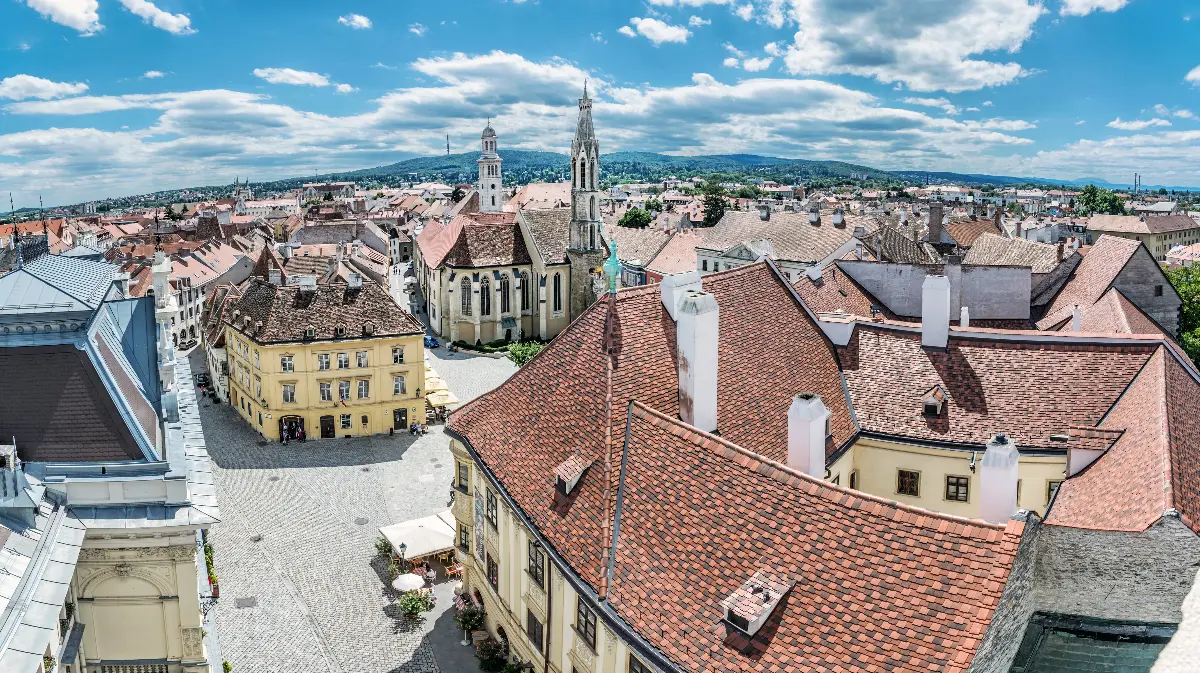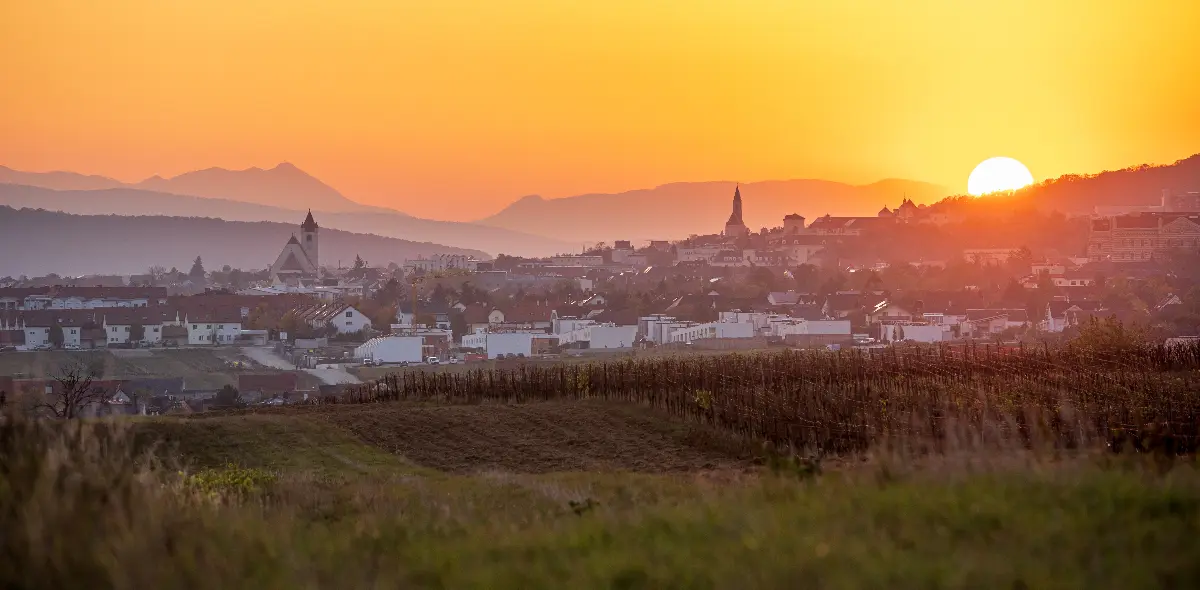
Helyszín címkék:
The Iron Curtain cycling route awaits you on the former border of East and West!
Kovács Kata
If we don’t have our own bike with us, it’s worth renting a trekking bicycle in Sopron. Non-stop bike rentals are available at various points of the city; it is even possible to book a bike in advance online. This is a great opportunity, since in the spring numerous nature lovers mount a bike and set off on the Iron Curtain trail. The cycling route is 43 km long, moderate difficulty level, and can be completed in about 5 hours. But before leaving behind us Sopron riding the bike, let’s admire the city’s narrow, cobblestoned streets, the medieval buildings, and climb the Fire Lookout Tower, from which it is possible to take a look at the city from a bird’s eye view.
The starting point of the cycling route is Sopron’s central square, from where we are heading towards Ágfalva, a charming little village. We can get to the picturesque village from the city centre through the bike path crossing Deák Square, and meanwhile we may admire Sopron’s spectacular districts. After about half an hour of cycling we can enjoy the clean air and the scent of fallen leaves coming from deciduous forests. The 800 years old village is located right next to the Hungarian-Austrian border, therefore in the times of the Iron Curtain it was an isolated settlement strictly controlled by the border guards. The local country house has a permanent exhibition on the past and the everyday life of Ágfalva. In each October the village organises the Chestnut Festival in Ágfalva, where autumn is greeted with a street fair, popular music programmes and special chestnut dishes. We might get acquainted with the symbol of the 40 years of division and the history of the iron curtain at the small border crossing in Somfalva.
Adventures in Burgenland
From the medieval village we cycle towards Sopronkertes (in German Baumgarten), where the main attraction is the 15th century Pauline monastery; the legend says that the monastery is connected with the monastery of Sopronbánfalva by a secret passageway. Although the mysterious passageway was never found, the legend is still alive. The monks’ former residence was built about one kilometre from the village – it’s worth interrupting our tour for a while and have a rest there. The monastery awaits the visitors in beautiful surroundings and in a good state, its last monk died in 1836.
From Baumgarten we leave towards the Pan-European Picnic Memorial Park. The path goes through small villages over varied terrains to Fertőmeggyes (in German Mörbisch am See), where we can see the gorgeous panorama of the Fertő-basin. The village was part of Sopron Manor from the end of the 14th century until 1848. It is a famous wine region, its characteristic streets are dotted with narrow gardens and whitewashed houses with porch. Mörbish is one of the privileged settlements with waterfront, where we can enjoy the opportunities offered by the pleasant beach and the theme park, but one of Europe’s greatest aquatic stage is also located here.
The Iron Curtain’s history comes to life
From Fertőmeggyes we leave towards Fertőrákos. At the cycling path connecting the two sites we can visit a mystical cave. The 1800 years old Mithraeum was left to us by the Romans, however due to the Iron Curtain stretching here this sight also remained hidden from the world. The Pan-European Picnic Memorial Park is only 4 km from here. The event with the same name was announced on 19 August 1989, in order to bring down the Iron Curtain, and to promote the idea of Europe without borders. The slogan of the peaceful events held at the border gate was “Dismantle and take with you”. The visitor centre is open to guests every day of the week; it is not only a popular tourist destination, but a place of pilgrimage for the former East German refugees as well. The place sets a worthy memory for the 1989 events. The memorial park is also a kind of time corridor, where we may experience the years of the Iron Curtain and the moments of border-crossing. The border guard tower still standing today is an emotionally turbulent sight, and so is the stylised East-West gate and the exhibition documenting the events at the time. Next, we arrive at the final stage of the route, we head towards Sopron. The cycling path crosses Fertőrákos, where come across the old Iron Curtain’s remains all the time. On the northern side of Fertőrákos Quarry a huge metal statue of barbed wire commemorates of the border-crossing in 1989, and all the people who were present at this historic moment. At the main street (Fő utca) of the city a spectacular stone statue reminds of the events of the fall of the Iron Curtain.
Leaving behind Fertőrákos we mostly follow a gravel forest path, which joins in an asphalt bike path and cycling down on Tómalom street we get back in Sopron’s centre.









